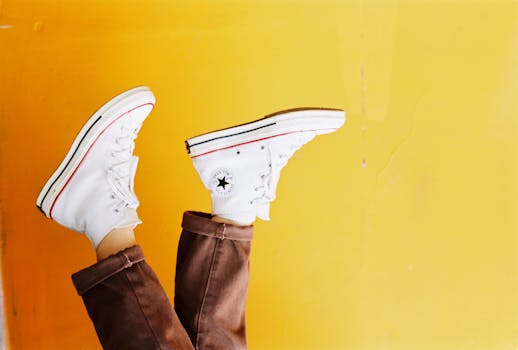
Table of Contents

- The 1920s: The Birth of Modern Fashion
- The 1930s: Elegance in Hard Times
- The 1940s: War and Resilience
- The 1950s: The Golden Age of Couture
- The 1960s: Youthquake and Revolution
- The 1970s: Bohemian and Disco Vibes
- The 1980s: Bold and Excessive
- The 1990s: Minimalism and Grunge
- The 2000s: Eclectic Styles and Fast Fashion
- The 2010s: Sustainability and Social Media Influence
- Conclusion
The 1920s: The Birth of Modern Fashion

The 1920s marked a significant shift in fashion, with the emergence of the flapper style that symbolized women’s liberation. The decade was characterized by shorter hemlines, loose silhouettes, and the use of bold patterns. Coco Chanel popularized the little black dress, while designers like Jean Patou and Paul Poiret revolutionized women’s fashion with their innovative designs. The influence of jazz music and cultural movements like the Harlem Renaissance played a crucial role in shaping the fashion landscape of this era.
The 1930s: Elegance in Hard Times

During the 1930s, the world faced economic hardship due to the Great Depression. Fashion reflected this struggle yet maintained an air of elegance. Designers focused on creating garments that emphasized femininity, with a return to longer hemlines and more fitted styles. Hollywood glamor influenced everyday fashion, with stars like Greta Garbo and Joan Crawford setting trends. Fabrics like silk and rayon became popular, giving way to luxurious looks even during challenging times.
The 1940s: War and Resilience

The 1940s were defined by World War II, which significantly impacted fashion. With fabric rationing, designers had to be innovative. The utility clothing movement in the UK promoted simplicity and functionality. However, post-war fashion saw a dramatic shift with Christian Dior’s New Look in 1947, which celebrated femininity with nipped waists and full skirts, marking a return to opulence and elegance.
The 1950s: The Golden Age of Couture

The 1950s are often referred to as the golden age of couture. Fashion became a reflection of post-war prosperity, with extravagant designs and lavish fabrics. Designers such as Dior, Balenciaga, and Givenchy dominated the scene. The decade saw the rise of the teenage culture, leading to styles like the poodle skirt and leather jackets. The influence of rock and roll also shaped fashion, with iconic figures like Elvis Presley and Marilyn Monroe becoming style icons.
The 1960s: Youthquake and Revolution

The 1960s brought about a youthquake, a cultural revolution that redefined fashion. This decade was marked by bold colors, geometric patterns, and the mini skirt, popularized by designers like Mary Quant and André Courrèges. The London Mod scene and the rise of counterculture movements influenced styles that embraced individuality and self-expression. The era also saw the emergence of iconic models like Twiggy, who personified the new look.
The 1970s: Bohemian and Disco Vibes

The 1970s was a decade of eclectic styles, blending bohemian influences with disco glamour. The hippie movement inspired flowing garments, tie-dye, and ethnic prints, while disco culture brought about form-fitting outfits, sequins, and bold colors. Designers like Halston and Yves Saint Laurent played a pivotal role in shaping the fashion of this era, creating iconic pieces that are still celebrated today.
The 1980s: Bold and Excessive

The 1980s were characterized by bold fashion statements, bright colors, and extravagant styles. Designers like Gianni Versace and Jean-Paul Gaultier embraced excess, while shoulder pads, big hair, and flashy accessories became synonymous with the decade. The influence of pop culture, particularly music icons like Madonna and Michael Jackson, shaped the fashion landscape, leading to a celebration of individuality and self-expression.
The 1990s: Minimalism and Grunge

The 1990s saw a shift towards minimalism, with designers like Calvin Klein and Jil Sander promoting clean lines and neutral colors. However, the grunge movement, led by bands like Nirvana, introduced a counterculture style characterized by flannel shirts, ripped jeans, and combat boots. This decade marked a significant blending of high fashion with street style, paving the way for future trends.
The 2000s: Eclectic Styles and Fast Fashion

The 2000s were defined by eclecticism and the rise of fast fashion. The internet revolutionized how fashion was consumed, with trends changing at a rapid pace. Styles ranged from low-rise jeans and crop tops to boho-chic looks. Designers like Marc Jacobs and Stella McCartney gained prominence, while brands like H&M and Zara made high fashion accessible to the masses.
The 2010s: Sustainability and Social Media Influence

The 2010s ushered in a new era of fashion focused on sustainability and social consciousness. Social media platforms like Instagram transformed how trends were disseminated, with influencers shaping public perception of style. The rise of sustainable fashion brands and ethical practices reflected a growing awareness of environmental issues. Vintage and thrift shopping became popular, as consumers sought unique pieces while minimizing their environmental impact.
Conclusion

Fashion is an ever-evolving art form that reflects societal changes, cultural movements, and personal expression. From the flapper dresses of the 1920s to the sustainable practices of the 2010s, each decade has left an indelible mark on the fashion landscape. Understanding the evolution of fashion not only provides insight into our history but also inspires future trends as we continue to express ourselves through style.
See more:
https://www.vogue.com
https://www.harpersbazaar.com
https://www.thefashionisto.com





